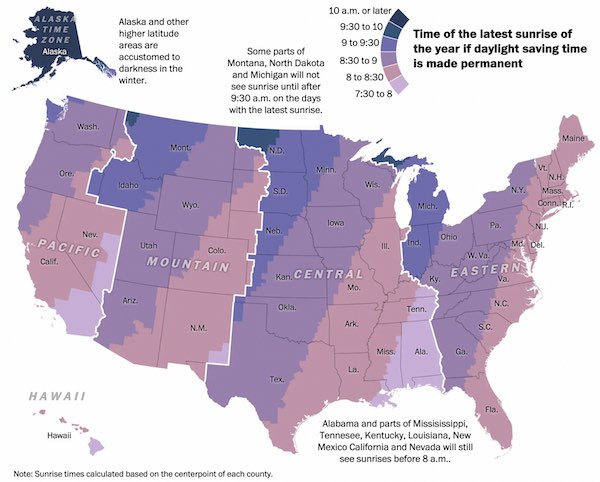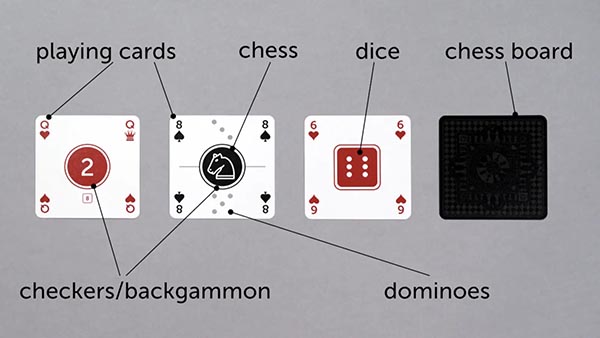Your Friday Handymen Keeping Time By Sweeping Trash Every Minute
Stephen Wilhite, RIP
He may not be a household name, but if you’ve ever shared an Internet meme, you’re familiar with his legacy: he invented the Graphics Interchange Format (GIF) while working for CompuServe in the 1980s. Although the format is synonymous with animated memes and reactions these days, Wilhite’s intention was to create a format that could support high-quality, high-resolution color images at a file size that could be easily distributed back in the day when 28.8 Kbps modems were still several years off. The GIF format was replaced by other formats like PNG and JPEG largely because Unisys held a patent on the image compression technique incorporated in the format, and charged licensing fees. PNG was developed as a free alternative. The patents have since expired. (Daily Dot takes a deep dive into the history of the format.)
Wilhite invented the GIF by himself, working on it at home at night and until he perfected it. Says The Verge, “He retired around the early 2000s and spent his time traveling, camping, and building model trains in his basement.”
And, by the way, Wilhite himself was quite adamant that it is pronounced “jif.” QED.
In Da Nile
Which queen of the 18th Dynasty of Ancient Egypt owned the most non-interchangeable units of data stored on a blockchain?
— Moose Allain ?(@MooseAllain) March 22, 2022
NFTiti
Cup of Wisdom
Here’s a pretty cool rethink of the paper coffee cup, one that is recyclable, biodegradable, and eliminates the need for a lid or a straw: the Butterfly Cup. Resembling a French fry package, it’s a paper beverage cup whose top flaps can be folded in to form a seal, so there is no need for a separate lid, and the corner features a spout you can sip from, so there is no need for a straw.

Says Core77:
It can be used for both hot and cold drinks. Surprisingly, the company says, the cup does not have the plastic lamination inside that most drinking cups do; instead they use a "cutting-edge water-based dispersion waterproofing technology," whatever the heck that means. The end result, they claim, is that the cup biodegrades like regular paper, or can be recycled.
A&W has announced that they are going to be conducting trials of the Butterfly Cup in Canada. Let’s hope other chains give it a try, as well.
Don’t Give Them Any Ideas
TurboTax Threatens To Tell IRS Customer Cheated On Taxes Unless They Upgrade To Deluxe Version https://t.co/vYFFrk6kzu pic.twitter.com/3z4PJzLC1H
— The Onion (@TheOnion) March 22, 2022
On the Ball(Point)
Take a look at this magnificent drawing. What do you think the artist used?

If you said “ballpoint pen,” you would be correct. Via Laughing Squid, French artist Louis Gibiard creates ballpoint pen drawings that resemble classic art. Gibiard also offers tutorials on how to use a ballpoint to shade and outline.
What I do is light cross hatching, your lines have to be close enough so they create a light value, but they shouldn’t be overlapping each other. Work by layers, to have the best shading possible, what works for me is that the 5 first layers should be done without any pressure applied, only cross hatching in the different directions. Then adapt the speed/angle/pressure to the part you’re working on. More speed=light shade because less ink has the time to reach the paper, heavy pressure=decreases the chances to have a smooth finish so use it at the very end. Work from light to dark, that way you’ll have more control over your values, it’s easy to darken, impossible to lighten.
What Could Possibly Go Wrong?
Zoom’s new virtual avatars let you show up to your next meeting as a dog https://t.co/oZlGovTCIs pic.twitter.com/Ia2S5ndJZY
— The Verge (@verge) March 22, 2022
We are reminded of one of our favorite stories from 2020—the Zoom Cat Lawyer—which, we are pleased to note, now has its own Wikipedia entry.
Vested Interest
Was it a good week for graphene news? It’s always a good week for graphene news! The weather may be getting warmer (somewhere) but now is a good time to get a jump on next winter, with the USB Graphene Heated Vest, now on sale for £15.99 instead of its usual £49.99. Its graphene-based textile material is charged via USB. Available in Navy, Red, Black, or Camouflage, and in a wide range of sizes.

Yes!
I totally over-romanticized the idea of being around people again.
— J. Elvis Weinstein (@JElvisWeinstein) March 17, 2022
Where Are the Savings?
This week, apparently aggrieved at having to change a clock twice a year, the Senate passed a bill to make Daylight Savings Time permanent. Via the Washington Post, a map showing the time of the latest sunrise of the year if daylight saving time is made permanent. Note that some parts of Montana, North Dakota, and Michigan wouldn’t see sunrise until after 9:30 a.m. on those days when sunrise is the latest.

Signs of the Times: Sounds Ominous
Writing Puzzle #14.
— Merriam-Webster (@MerriamWebster) March 16, 2022
Reword this sign to make it sound less weird. pic.twitter.com/cv3CLDtSfF
Bag It
Do you have an unwieldy collection of plastic shopping bags, perhaps stuffed in a drawer or in the cabinet under the kitchen sink? Not if you are David Powell, who, via Boing Boing, has devised a clever method for folding and storing them so that they don’t take up much room at all and can be easily reused.
Watch him demonstrate:
Cross Reference
Authors/historians/readers/researchers: James A. Garfield had your back.#jamesagarfieldnhs #twitterstorians pic.twitter.com/jIpnPh9orL
— James A. Garfield National Historic Site (@GarfieldNPS) March 20, 2022
One Ring to Marry Them All
During the pandemic, industrial designer Kristen Smith used the downtime to rethink the idea of the wedding ring, ultimately developing a unique piece of jewelry (and company) called Collide Rings. Essentially, it is a two-piece ring: one piece is an engagement ring, worn after the question is popped and hopefully accepted. To ger the other piece—the wedding ring—you have to actually show up at the altar (there’s always a catch). At that point, the wedding ring is threaded into the engagement ring, become a unified whole (metaphors abound here).

Em and Ems
How—DARE—you. https://t.co/2D0c1BDCRK
— Maureen Johnson (@maureenjohnson) March 16, 2022
Eternal Light
If you’re ever in Livermore, Calif., for whatever reason, be sure to check out the longest-ever burning light bulb. Indeed, the Livermore-Pleasanton Fire Department’s Fire Station #6 has a light bulb called the “Centennial Light” that was turned in in 1901—and has been burning since. Says Mental Floss:
On June 27, 2015, there was a party held in the bulb’s honor to celebrate its one millionth hour of operation. There were refreshments and music and barbecue. Town officials toasted the bulb's achievement.
Livermore is located about an hour east of San Francisco off I-580, and is home to the Lawrence Livermore National Laboratories and is a very science, engineering, and technology oriented city. (Parades in Livermore have been known to feature Edward Teller as grand marshal. We are not making that up.) At any rate, there is such a thing as a “bulb tourist,” and the volunteer firefighters at ol’ #6 have to be prepared.
you have to both fight fires and give historical light bulb tours at a moment's notice. The two firemen who hosted me said I was the second visitor of the day. Some days they have huge groups who come in—groups that have been known to bunch beneath the bulb and gawk crane-necked at it until the firemen get an emergency call.
So why has it been burning so long, and why can’t every light bulb last as long? No one is entirely certain, and possible explanations range from “it’s just one of those things” to vaguely plausible (since it is rarely turned off—only a few times when the fire station moved—the filament has burned at a steady rate without repeatedly cooling down and heating back up), to the conspiracy theory-minded (it was invented before light bulb manufacturers colluded to deliberately shorten the life of bulbs, and the Centennial Light reflects “what might have been”). Supposedly, Thomas Pynchon wove this conspiracy cited in his novel Gravity’s Rainbow.
There was also a time when the excitement in Livermore wasn’t limited to the longest burning light bulb. The town also had what was believed to be (but actually wasn’t) the tallest wooden flagpole. It was all happening in Livermore.
Puzzling
Will Shortz Frustrated That Police Yet To Crack Taunting Puzzles Revealing Locations Of 40 Years Of Murder Victims https://t.co/XeTnZ7SeNw pic.twitter.com/8i6FoyyRkx
— The Onion (@TheOnion) March 20, 2022
Damn It, Jim!
When we think of bones (actual anatomical bones, not Dr. Leonard “Bones” McCoy of Star Trek), we don’t think of highly complex organs. They’re just big chunks of calcium—obviously extremely important and useful chunks of calcium—and while they are able to repair themselves, and bone marrow is the primary site of new blood cell development, we don’t put bones on the same organ-ic level as, say, the heart or lungs, much less the brain. But maybe we should. Via Smithsonian:
Over the past couple of decades, scientists have discovered that bones are participants in complex chemical conversations with other parts of the body, including the kidneys and the brain; fat and muscle tissue; and even the microbes in our bellies.
It’s as if you suddenly found out that the studs and rafters in your house were communicating with your toaster.
Yeah, well, let’s not bring the Internet of Things into this. Anyway, bone cells include osteoblasts and osteoclasts, which are responsible, respectively, for bone growth and bone “disassembly,” so it can reform and grow. There has also been found to be a third type of bone cell: osteocytes, which were largely ignored until the aptly named cell biologist Lynda Bonewald took an interest in them. Her research found that:
the cells make a growth factor called FGF23. This molecule then cruises the bloodstream to the kidneys. If the body has too much FGF23 — as happens in an inherited form of rickets — the kidneys release too much phosphorus into urine, and the body starts to run out of the essential mineral. The resulting symptoms include softened bones, weak or stiff muscles, and dental problems.
Further research found that bone actively communicates with other organs, and also plays a role in how the body uses energy.
Bones, man. Give ’em a break…or not!
Wait Until Your 50s
One of the cool things they don't tell you about your thirties is you can hurt your neck by turning to look at something, which is wild because that is neck's main job.
— Ashley Nicole Black (@ashleyn1cole) March 22, 2022
Check, Mate
Do you like chess? Do you wish you could play it anywhere you went? If so, then good news! The Square Off Pro is a rollable, portable e-chessboard that features onboard AI to let you play wherever you happen to be, and at whatever skill level you have. It also magnetically detects each piece and tracks their moves, and can record games for later analysis. The app also lets you play with friends (or perhaps even blood enemies). If you’re a chess fan—or want to be—this looks pretty cool.
Shadowplay
National Geographic Picture of The Year. Black images are shadows of zebras. Zoom in and you will see zebras. pic.twitter.com/6dwnJ0uBSC
— Lars-Johan Larsson (@LarsJohanL) March 21, 2022
A Wicked Pack of Cards
Perhaps even better, if you like chess and card games, why not pick up a new deck of playing cards from Rob Halifax, which can also turn into a chess board—and can also be used for other games such as checkers, backgammon, dominoes, and even dice. Via Gizmodo:
The first thing you notice about the One Deck Game Cards is that the traditional suits and numbers have been pushed to the four corners of the cards. This makes room for additional graphics and symbols in the middle that allow them to be used for far more than just poker. There are small pip markings for dominoes, and chess piece symbols centered in red and black colored dots that also allows the cards to be used to play games like checkers and backgammon.
The second thing you’ll notice is that the One Deck cards are no longer rectangular. They’ve instead been cropped to perfect squares (although remain the same width as regular cards), which allows them to be laid out in perfect grids for games like chess and checkers. The backs of each card feature a solid black design that can be used to fill in the missing squares of the checkered game board you create. (The white squares are simply the negative space left over.)

Photo: Rob Halifax
Yes!
Why has everyone suddenly decided that in order to talk to someone you necessarily *need* to do it via Zoom/Skype/FaceTime?
— Marina Amaral (@marinamaral2) March 21, 2022
Phone calls are awful but video calls are hell
Bring back the homing pigeons
Mite Light
Are you in need of a night light? Do you like tardigrades? If the answer to both is yes, then good news! Via Archie McPhee, a glowing ceramic tardigrade night light.

At 4-1/8" x 2-1/4", it’s many times larger than an actual tardigrade, which means you can see it at night without a microscope.
Then things take a turn for the weird:
You’ll wish it could make its way over to your ear to whisper tiny lullabies into your ear, “Hush little tardigrade, don’t you cry. Mama’s going to sing you the first one hundred digits of Pi.”
Batteries included. LSD not.
Actually, it kind of looks like the bread lamp we mentioned last week.
Bore
According to research from the University of Essex, the world's most boring person is probably a data analyst who lives in a small town and who enjoys watching TV.
— Quite Interesting (@qikipedia) March 22, 2022
By the way, check out this week’s analysis of Outdoor Signage employment data.
This Week in Printing, Publishing, and Media History
March 21
1952: Alan Freed presents the Moondog Coronation Ball, the first rock and roll concert, in Cleveland, Ohio.
2006: The social media site Twitter is founded.
March 22
1765: The British Parliament passes the Stamp Act that introduces a tax to be levied directly on its American colonies. (Spoiler alert: it didn’t go well.)
1832: German novelist, poet, playwright, and diplomat Johann Wolfgang von Goethe dies (b. 1749).
1887: American actor Chico Marx born. (Why a duck?)
1931: Canadian actor William Shatner born.
2020: Indian Prime Minister Narendra Modi announces the country's largest ever self-imposed curfew, in an effort to fight the spread of COVID-19.
March 23
1842: French novelist Stendhal (né Marie-Henri Beyle) dies (b. 1783).
1857: Elisha Otis’s first elevator is installed at 488 Broadway New York City.
1910: Japanese director, producer and screenwriter Akira Kurosawa born.
1965: NASA launches Gemini 3, the United States’ first two-man space flight (crew: Gus Grissom and John Young).
March 24
1693: John Harrison, English carpenter and clock-maker, invented the Marine chronometer. (Harrison was the subject of Dava Sobel’s excellent book Longitude.)
1721: Johann Sebastian Bach dedicated six concertos to Margrave Christian Ludwig of Brandenburg-Schwedt, now commonly called the Brandenburg Concertos, BWV 1046–1051.
1834: English textile designer, poet, and author William Morris born.
1874: Hungarian-Jewish American magician and actor Harry Houdini (né Ehrich Weiss) escaped from the womb.
1882: American poet and educator Henry Wadsworth Longfellow dies (b. 1807).
1905: French novelist, poet, and playwright Jules Verne dies (b. 1828).
1909: Irish playwright and poet John Millington Synge dies (b. 1871).
1907: The first issue of the Georgian Bolshevik newspaper Dro is published.
1949: English singer-songwriter, bass player, and producer Nick Lowe born. And so it goes.
1958: Elvis Presley is drafted in the U.S. Army.
March 25
1811: Percy Bysshe Shelley is expelled from the University of Oxford for publishing the pamphlet The Necessity of Atheism.
1881: Hungarian pianist and composer Béla Bartók born.
1925: American short story writer and novelist Flannery O’Connor born.
1931: American journalist and activist Ida B. Wells dies (b. 1862).
1939: American screenwriter and producer D. C. Fontana born.
1957: United States Customs seizes copies of Allen Ginsberg’s poem “Howl” on obscenity grounds.
1995: WikiWikiWeb, the world's first wiki, and part of the Portland Pattern Repository, is made public by Ward Cunningham.
March 26
1484: William Caxton prints his translation of Aesop’s Fables.
1812: A political cartoon in the Boston Gazette coins the term “gerrymander” to describe oddly shaped electoral districts designed to help incumbents win reelection.
1827: German pianist and composer Ludwig van Beethoven dies (b. 1770).
1830: The Book of Mormon is published in Palmyra, N.Y.
1859: English poet and scholar A. E. Housman born.
1874: American poet and playwright Robert Frost born.
1892: American poet, essayist, and journalist Walt Whitman dies (b. 1819).
1911: American playwright, and poet Tennessee Williams born.
1931: American actor Leonard Nimoy born.
1959: American crime novelist and screenwriter Raymond Chandler dies (b. 1888).
1969: American novelist John Kennedy Toole dies (b. 1937).
1973: English playwright, actor, and composer Noël Coward dies (b. 1899).
1980: French linguist and critic Roland Barthes dies (b. 1915).
1996: American engineer and businessman, co-founder of Hewlett-Packard David Packard dies (b. 1912).
March 27
1845: German physicist, academic, and Nobel Prize laureate Wilhelm Röntgen born.
1869: American publisher and politician, and 65th Mayor of New York City James Harper dies (b. 1795).
1931: English author and playwright Arnold Bennett dies (b. 1867).
2006: Ukrainian-Polish author Stanis?aw Lem dies (b. 1921).
2012: American poet essayist and feminist Adrienne Rich dies (b. 1929).















Discussion
Only verified members can comment.